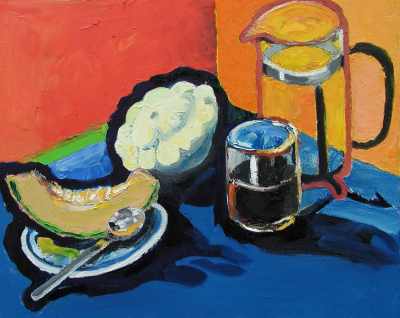the mission is now closed...
|
Sometimes you need to say, "Enough is enough!" Sometimes it is time to say cue the finale and ed the show. Today is that day and I wanted to let all 12 of my dedicated readers know that. Okay, that's a slight exaggeration, but you get the point. I started blogging in May of 2005 as a creative release and to have a place to share my sometimes outside of the box thoughts on life, God, politics and sports. Now my life is going in another direction and I need to free up the time to make things fit. I'm still passionate about politics. As recently as this weekend, I thought we should offer Rep. Marlin Stutzman (R-Ind.) who said on Saturday that Obamacare should be repealed because it "...shows a disregard for the will of the people" a deal. Here's the deal I'd offer since he seems to believe it is the job of our political leaders to follow the will of the people.
Finally Mr. Stutzman, if you feel strongly that we should follow the will of the people regarding Obamacare, fine, repeal it, but then replace it with a single payer government backed system for all Americans since that would truly reflect the will of the people. Of course I am still passionate about God and in fact, my time serving in Mexico as a host receiver for short-term teams increases every year. I will continue to write about that over at Notes from Dave, where my latest post is about American Exceptionalism and Mission. I also send out a weekly Monday Mission Moment that you can subscribe to through my ministry, Adventures in Life. I still love sports and will continue to follow my teams, albeit not as fanatically and I will still be thinking and writing about life, just in another context. After over 20 years of living, working and traveling in Mexico, I've decided to dedicate the majority of my writing time to that great country. I'll be writing about the people, the culture, the art, the food and the beauty that can be found not just in the normal tourist areas, but off the trail as well. To that end, along with my good friend Joe Ramirez, who will providing most of our top level photography, I have started a new WordPress blog dedicated totally to my experiences in and around Mexico and her culture. It's up now, has a few posts and I'd love you to visit, give us a look. If you like it, please take the next step to subscribe and recommend it to your family and friends, asking them to also subscribe. We want to win a few awards next year for our work and no matter how good your blog is, you need readers, so please, come on over to Dave Miller's Mexico and follow me on the journey to My Mexico! Blessing to all of you. I'll still be commenting here and there when something catches my fancy or gets my goat, but this will be my last post here at the mission.
(All material posted on this blog is the sole property of Dave Miller (c) and represents his personal views. This blog is in no way, nor has it ever been officially associated with Adventures in Life Ministry, for whom Dave has worked for over 20 years.)
Labels: Art, Culture, Dave Miller, Dave Miller's Mexico, food, Joe Ramirez Photography, mexico, WordPress |























